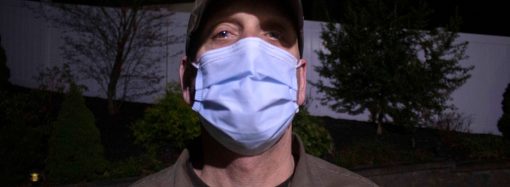By Charles Scott
This summer, I wrote for the Smithtown News. I spent six weeks building banks of information and contacts, awkwardly finding spots suitable for note-taking in busy press conferences and protests, and writing a mix of joyously reported stories, drawn-out research pieces and punched-up press releases. I took on almost a dozen stories, and only about 80 percent of that got in or got done. Still, I learned a lot.
My first week was pretty simple. I woke up way earlier than I normally would during the summer, got in my car, and struggled to find the Smithtown News building, a shrouded structure right next to a chaotic intersection and surrounded by shade-gifting trees. I walked in, met my editor and my coworkers, and got familiar with the infrastructure of the newsroom. The most essential tool was the email, through which everything from useful press releases to chaotic screeds constantly arrived.
I then took on two basic stories from my editor, neither requiring any on-the-ground reporting. Nonetheless, I did what I had to do, calling up sources and gathering information. It took me a bit to get used to asking questions on the phone while surrounded by other journalists who would be judging my interviewing skills, so my last few interviews were far smoother than the first few. My second week was similar, though I did get an opportunity to interview two trustees of the village of Asharoken.
During my third week, I got my first chance to report on the ground for the Smithtown News. I covered the opening of a solar power plant in Kings Park, an event that allowed me to interview a number of interesting people and to use my rusty photography skills to take a few pictures.
My fourth week involved covering two really intense events. First was an exhausting late-night town hall that spiraled out of control and off topic. Second was a loud protest at a busy intersection. Both were amazing experiences, even if they left me drained and required a lot of care when crafting them into stories. My fifth week was mostly synthesizing these stories, as it was a slow news week and cut off early by the 4th of July During the sixth week, I wrapped up by writing a few more stories, including one about a ritual animal slaughter in Smithtown.
All said, I realized a lot about the reality of local journalism, and I learned a lot about the style of The Smithtown News and The Observer. It’s a fascinating newsroom, as it creates editions for multiple areas with a relatively small staff. The editor, David Ambro, acts both as an editor and reporter, filing the majority of the bylines in every paper. The constant weekly deadlines and small staff mean event stories are often given enough depth and context to work, but not so much that they miss deadlines.
Ambro kept me to a high standard, encouraging me to improve my work as I got closer to the deadline. I didn’t find myself running up against deadlines, as I had ample time (about four hours a day) to write, and I tended to write pretty quickly and then edit and rework my stories afterward.
This is also to say I was given a blessing of distance from the broader process of creating the paper. I couldn’t legally work more than I did with the amount the New York Press Association was paying me, so I didn’t work endless hours finalizing layouts. I wrote stories and reported, but I wasn’t actively involved in the day-to-day labor of getting a paper out.
I recommend interns for The Smithtown News get ready for a newsroom that can be rambunctious, vulgar and tense, but also immensely rewarding and fun. Keep your hours early to keep away from deadline crunch, write and report your stories expeditiously, and try to think about your stories while you’re out of the office so you can make the most of your paid writing and reporting time. Ask questions, trust your editor’s advice, and make sure you get PDFs of your work to show your future employers.
